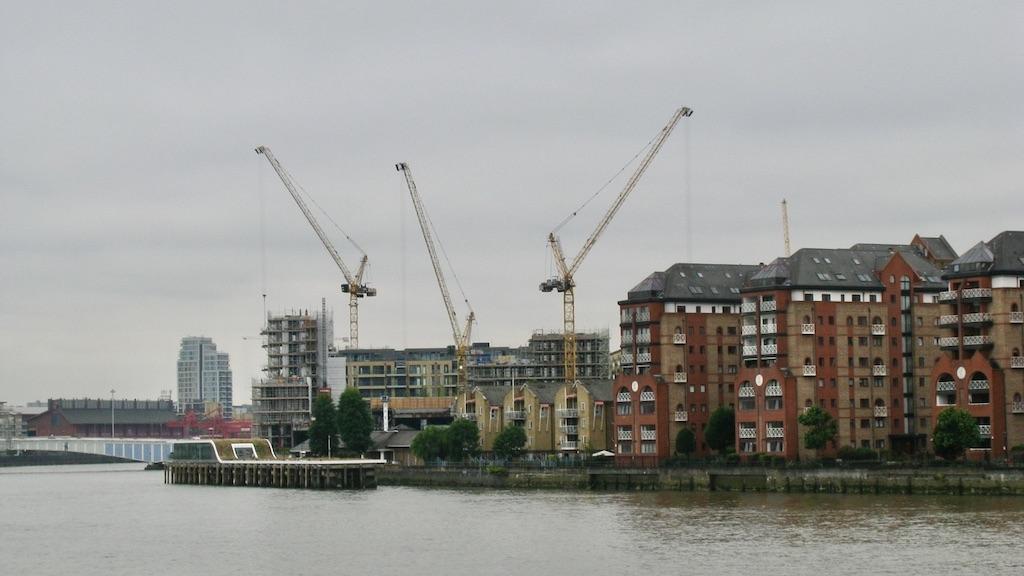High-Profile Crashes A Setback For Urban Helicopter Operations, Part 2

In clear weather, construction cranes along the River Thames are readily visible. However, on a foggy day from the cockpit of a low-flying helicopter, such objects can meld into the background, ensnaring an unsuspecting helicopter.
London residents may readily recall the crash of an Agusta A109 helicopter on Jan. 16, 2013, that occurred along the River Thames not far from Parliament and the headquarters of MI6, UK Secret Intelligence Service. The helicopter struck a construction crane and plummeted to the ground, fatally injuring the pilot and a nearby pedestrian.
The falling wreckage ignited fires in cars along the street and sent pedestrians scrambling out of the way. The fire quickly spread over a considerable distance, requiring an all-out assault by London’s fire brigades in the dense urban setting. Emergency medical resources were strained due to the number of injuries.
The effects of the accident were not confined to a small section of city blocks, but instead reverberated further outward. The crash shut down a major transportation node that relies heavily on its train and underground system. This had a ripple effect on commuters throughout other portions of London. Public security authorities were concerned that the accident was a terrorist attack due the major governmental institutions in the immediate vicinity.
Reaction by local and national leaders was swift. Kate Hoey, the member of Parliament representing the neighborhood constituency, called for an inquiry into the increasing number of helicopters flying around London. Boris Johnson, then London’s mayor, and David Cameron, UK Prime Minister at the time, separately announced reviews of the regulations concerning helicopter flights around central London.
Debris Rains Down In Seattle
Debris from a Eurocopter AS350 B2 that had just lifted off from a rooftop helipad in Seattle on March 18, 2014, endangering many. The electronic news-gathering helicopter had landed on the KOMO News helipad about 30 min. prior to the accident. The purpose was to refuel for its repositioning flight to the airport in Renton, Washington.
A review of three security camera recordings revealed that the helicopter initially landed on the helipad and remained stationary for about 15 min. It then lifted off and simultaneously began to rotate counterclockwise in a near-level attitude.
The helicopter continued to rotate counterclockwise for about 180 deg. while it ascended slightly above the elevated helipad, after which it began to ascend further while moving slightly away from the platform. After completing about a 360-deg. rotation, the helicopter transitioned to a nose-low (tail-high) attitude while it continued to rotate counterclockwise. The helicopter rotated counterclockwise another 180 deg., and then began to lose altitude while moving rapidly away from the elevated helipad. It then descended until ground impact.
A post-crash fire erupted that consumed most of the fuselage and the forward section of the tail boom.
A vehicle located east of the main wreckage was damaged by fire. Another vehicle that was located immediately west of the main wreckage and oriented on a southerly heading exhibited impact damage. The commercial pilot and one passenger were fatally injured, and one person, located in a stationary vehicle, was seriously injured.
The NTSB determined the probable cause of the accident was the loss of control due to a loss of hydraulic boost to the tail rotor pedal controls at takeoff, followed by a loss of hydraulic boost to the main rotor controls after takeoff. The reason for the loss of hydraulic boost to the main and tail rotor controls could not be determined because of fire damage to hydraulic system components and the lack of a flight recording device.
These accidents illustrate the risk to nearby persons and property when an incident occurs, and each provides additional evidence to neighborhood groups who oppose building a heliport in their vicinity.
Local governments have enacted rules that have a direct effect on helicopter operations, and usually these rules limit private and commercial aircraft access. For example, Chicago’s Municipal Code specifies, “No helicopter may takeoff or land from a heliport unless areas are available from any point necessary for that takeoff or landing to allow an emergency landing to be made without undue hazard to passengers or persons or property on the surface.
“For this purpose, areas such as schoolyards, parking lots, recreation areas, highways, shopping centers and public docks are not considered available areas for possible emergency use when they are occupied by persons or vehicles unless there are unoccupied parts thereof that are large enough to allow a landing without that hazard.”
An air ambulance helicopter fell back down to a hospital helipad in Grand Rapids, Michigan, after its tail rotor struck an object, in Part 3 of this series.
Catch up with yesterday's piece, High-Profile Crashes A Setback For Urban Helicopter Ops, Part 1.






Comments
Another issue I have never seen in the press is wave drag. Any flying object generates wave drag including rotorcraft, UAM and drones. When many drones and UAM fly over cities, the risk that they will encounter the wave drag of each other is huge and they will crash on ground. There have been many accidents when aircraft enter the wave drag generated by another one, and it generally terminates in an air disaster with casualties both in the air vehicles and on ground. What do we do? Are we waiting for crashes to happen and then think about?
Bernard GUILLAUME
Another issue I have never seen in the press is wave drag. Any flying object generates wave drag including rotorcraft, UAM and drones. When many drones and UAM fly over cities, the risk that they will encounter the wave drag of each other is huge and they will crash on ground. There have been many accidents when aircraft enter the wave drag generated by another one, and it generally terminates in an air disaster with casualties both in the air vehicles and on ground. What do we do? Are we waiting for crashes to happen and then think about?
Bernard GUILLAUME